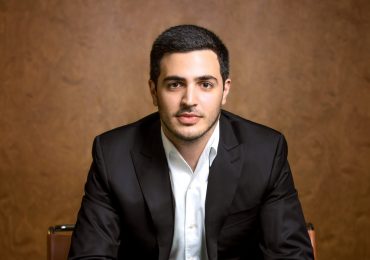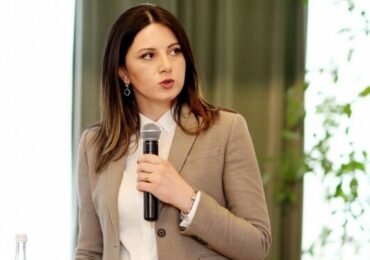Bidzina Ivanishvili has promised that the Cartu Fund will invest one billion Euros in educational and scientific infrastructure, which will be bestowed upon the state. The plan is to build a university town in Kutaisi, a technological institute and a scientific-research center in Tbilisi.
What’s not to like about that?
One billion Euros seems like an exorbitant sum of money for the Georgian education system. The total budget of the Georgian Ministry of Education and Science in 2015 was approximately 320 million Euros. In other words, the investment promised by the Cartu Fund is just about as much as the state spends in three years.
That is exactly where the first question arises:
Can Georgia afford the maintenance of such expensive projects?
“Bidzina will bestow upon the state” has become a pre-election tradition.However, it is time to think about the costs associated with the maintenance of such grand projects. Before we get too excited about it, we should first carefully weigh the project ROI and costs.
The term ‘white elephant’ is an expression used in English. The term is derived from the sacred white elephants kept by monarchs in Thailand. If the monarch disliked one of his subordinates, he would give him a white elephant as a gift. Receiving a white elephant from a monarch as a gift was simultaneously both a blessing and a curse. It was a blessing because the animal was sacred and it was a curse because the recipient now had an expensive-to-maintain animal he could not give away – one that would eventually drive him into bankruptcy.
There are many examples of ‘white elephants’. For instance in the late 19th century the Brits calculated the costs associated with administering one of their African colonies in Uganda and realized that it was a total losing endeavor economically. There are many instances when owners can no longer afford to maintain or even keep their own real estate, since the costs exceed the revenue. Last year, the widow of millionaire comedian Robin Williams, who passed away in 2014, told the court that she could no longer afford the upkeep of the palace she had inherited from her deceased husband.
Will the ‘Mega Complexes”, as Prime Minister Kvirikashvili refers to them, built by the Cartu Fund, be cost-effective for the country? As a rule, state expenses are not followed by direct profit. There is a possibility of indirect profit – if Georgian students get a better education, their salary demand may increase on the labor market and the country could get rich. However, there are many other ways to improve education and/ or make the country rich. It is necessary to consider all available alternatives: what else can we do for the same price?
If the promise concerning 60,000 students is kept, then the university will need at least 6,000 staff members. The student-teacher ratio at the Massachusetts Institute of Technology is nine to one. At the University of Science and Technology of China, the student-teacher ratio is eight to one. At the Caltech and Moscow Technological University the student-teacher ratio is seven to one.
In order to discuss any improvement in the sphere of technological education, one should have a highly professional faculty in place. The salary for a relatively high-level professor in Georgia has already reached GEL 3,000, and it will take even more to lure foreign professors. Even if we use GEL 2,000 as the average monthly salary for the university staff, it will easily add-up to approximately 60 million Euros (GEL 114 million). Therefore, it is going to be much harder to calculate the overall costs of Ivanishvili’s ‘mega complexes’. The budget of world-class technological universities will reach one billion Euros. Even if we calculate a tenth of that sum by skipping an accurate estimate, Georgia still cannot afford this kind of luxury at the present time.
Which leads us to the next question:
Why does the government unconditionally agree to take over Cartu’s projects?
No one can ban a private fund from implementing educational or scientific projects. However, this does not mean that the state should becompelled to participate. The state must weigh all the pros and cons related to a ‘donated’ project, just as it would with its own projects. Where is the strategic vision that the government will need in order to develop education and science in this particular form? Where are the documents with the appropriate justification?
The country has an informal ruler and I have no intention of bringing up the many examples to substantiate this assertion. However, the synchronized swimming of the government of Georgia and Mr. Ivanishvili with their ‘mega complex’ fantasies is just one example of this. If it hadn’t been for the dominance of Ivanishvili’s opinion, I might have agreed with one economist friend of mine – “after all if this becomes a losing endeavor, they will either sell it or move the refugees there.”
Ivanishvili’s government will not shut down these projects and most likely, neither will the next government –it is very hard to shut down major educational and scientific projects even if they turn out to be a total failure.
But the opening of this university is not even a done-deal, let alone the closing of it. Prime Minister Kvirikashvili mentioned in his speech that Ivanishvili had announced the construction of the university in Kutaisi in 2011, and that the idea of building it had come much earlier.
Why have these past five years been wasted?
As it turns out, the construction is about to start and in the best case scenario, the construction work will be completed by 2019. According to insider information, the main concept of the upcoming university has not yet been developed (for instance, what will the language of instruction be?) Let us forget all the unfulfilled promises – given such pace, the numbers and dates announced by the government for the sake of public relations is even more dubious.
If the development of technical education is indeed a priority for the government and it is willing to spare no expense for that, than why is there such a delay?
The construction of new buildings is obviously very important, but not so crucial as to wait for it as long as seven years or more– from the announced date in 2012 till 2019.It is far more important to have a strong faculty, effective management and teaching methodology, than it is to build a university campus.
Let us recall that in 2012, the government of Georgia donated the newly-built campus for Batumi Technical University to City Hall.
If having a technical university in west Georgia is so important, than why wasn’t the Batumi project given a chance?
The previous government claimed that the building was designed with the participation of foreign specialists – the lower floors were designated for laboratories and auditoriums, and the top floors would have accommodated professors and students. Regardless of how many drawbacks the Batumi campus might have had, it is hard to believe that it would have been useless in comparison with the existing State Technical University in Tbilisi . The US also offered a multi-million grant for the Batumi project. Unless it was simply a clash of egos between Ivanishvili and Saakashvili, it is still unclear why the fulfillment of the technological dream did not start in Batumi in 2012, instead of Kutaisi in 2019.
We can only hope that the Kutaisi Technical University will turn out to be a state-of-the-art academy and justifies all the costs.
Are these big expectations realistic?
The entire developed world recognizes that a high level university professor needs to be a productive scientist as well. The productivity of a given scientist is measured by their publications in international journals. For instance, approximately 30 such publications in computer science are published from Georgia on a yearly basis. In response to the myth regarding the ‘demolished science’, it should be noted that before 2004, the number of such publications was less than 10.From 2009-2012, the number of annual publications reached 40-50 articles, which included joint publications with foreign experts.
Optimistic estimates show that there are total of about 30 people who can safely be regarded as having a high academic level in computer sciences. All these specialists are already employed at various universities. In the case that two more mega complexes are built, we would then have to deal with even more staff shortages. For an ambitious technological science center and a university with the capacity of 60,000 students (even for 15,000) 30 computer science specialists is obviously not enough. We have a similar situation in most areas: if we don’t want to get the old Technical University, which just moved to a new building, then we definitely need to bring professors in from abroad. However, the new university cannot be staffed with only foreign specialists. The dream of creating a super educational institution in Kutaisi may sacrifice modest, but real development of several Georgian universities, since their staff will have to move to Imereti.
The next question is about the faculty members:
Should the language of instruction be English or Georgian?
According to insider information, foreigners have recommended making it an English language university. However some Georgians are opposed to this idea. Most likely, foreign consultants just looked at the numbers and realized that Georgia has a shortage of good professors (unlike the team formed by the Georgian physicist Gia Dvali, whose reform document of 2012 did not contain a single relevant number). It is hard to say whether we will follow these recommendations or not. Some people still share the fear that active usage of the English language may undermine or make us forget our mother tongue. It would be more reasonable to fear that English might be rejected as an instructional language, since in that case it will be a control shot for the crystal towers of Kutaisi University. Provided that the government does everything correctly – makes the proper selection of local and foreign professors, incorporates the existing technological university (so that our scarce resources will not have to be divided between two big technical universities) and disregards Gia Dvali’s vision of a technical university – we might have a truly good university on our hands. It is also possible to improve the existing universities in Tbilisi, Batumi and Kutaisi, as long as we have the right vision.
But one thing remains unclear:
How did they come up with 60,000 students?
In 2015, the total number of students in 75 higher educational institutions – including MA, PhD and undergraduate students was only 167,000. The most highly-rated university in the world – The Massachusetts Institute of Technology (MIT) has only 11,000 students. It will simply be impossible to fill the capacity of 60,000students even if one out of three Georgians goes to this university – in which case it will no longer be an elite institution. It is unclear why they want to spend the extra millions on the construction and maintenance of such a huge complex, when a much smaller university would be perfectly fine. Georgia needs a high-level education institution and not a massive university. We hardly have enough staff for a small university and the prefix ‘mega’ only complicates things.
There would not be any need in so much critical discussion if it weren’t for one particular whim – to bestow everything on the state. MIT is a private university and this fact does not raise doubts regarding its quality or its role in the development of the United States. Instead of promising to invest a billion dollars in infrastructure, Ivanishvili could easily come up with a realistic long-term plan for a normal sized private university, in which case he would still retain his charitable image and the status of de facto ruler of the country, and at the same time reduce the risks to Georgia’s higher education system.














